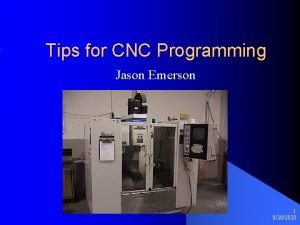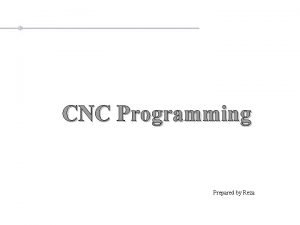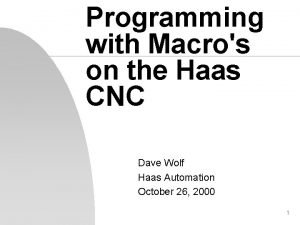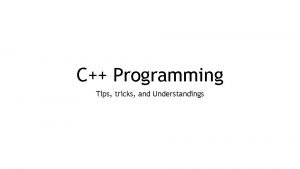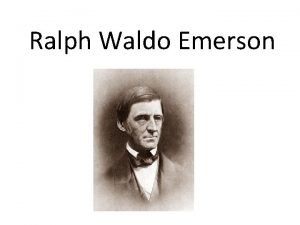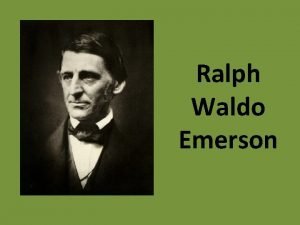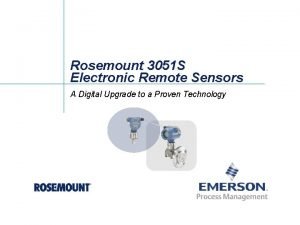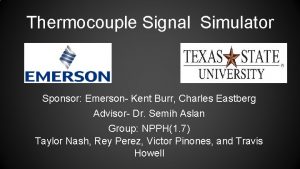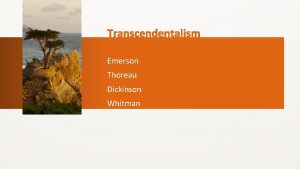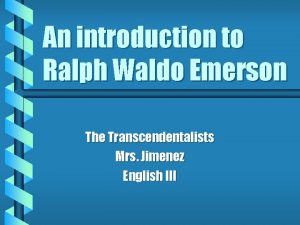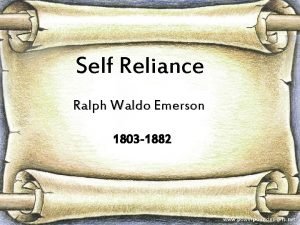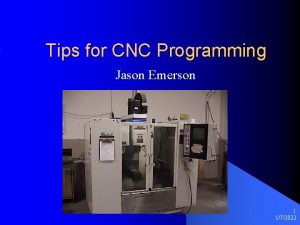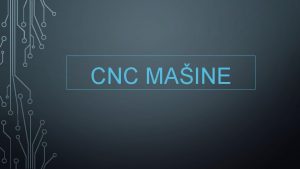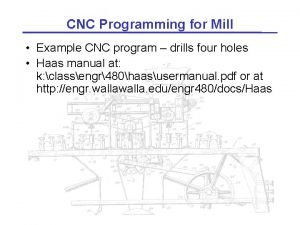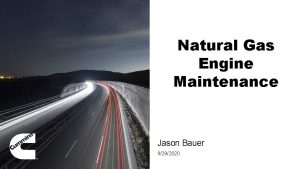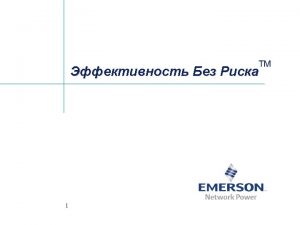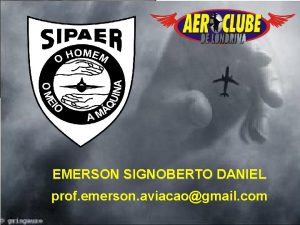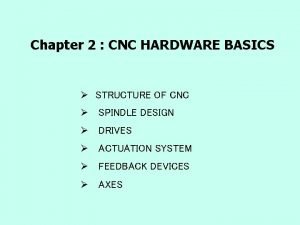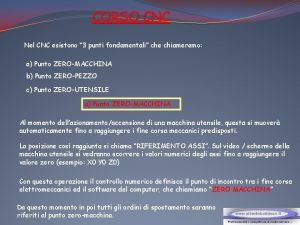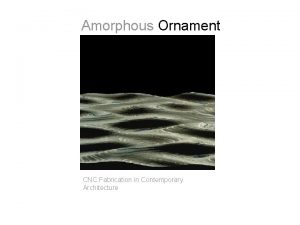Tips for CNC Programming Jason Emerson 1 9292020
















- Slides: 16

Tips for CNC Programming Jason Emerson 1 9/29/2020

Introduction Handy references for the CNC programmer. l Student will learn formulas and codes for CNC machines. l Students will apply lesson to develop a program for a CNC machine. l 2 9/29/2020

Agenda Speed and feed formulas l Common G codes l Common M codes l 3 9/29/2020

Overview The student will learn the basic foundation to developing a CNC program. l Each lesson will work together to produce the final outcome. l 4 9/29/2020

Vocabulary l l l CNC – abbreviation of computer numerical control. Chip load – the thickness of the chip the tool creates for each revolution of the tool. The thicker the chip the greater the tool pressure, which causes the tool to bend. Circular interpolation – enables the programmer to move a tool up to 360 degrees in an arc using only one block of information. The circular path may be generated in any two planes. 5 9/29/2020

Vocabulary l Cutter compensation – provides a means of using a cutter from a different diameter than originally intended in a program. The programmer may use either an oversized or undersized cutter and still maintain the programmed geometry. 6 9/29/2020

Vocabulary Feedrate – A code containing the letter F followed by digits. It determines the machine slide rate of feed. l G-code – A word addressed by the letter G and followed by a numerical code defining preparatory functions or cycle types in a numerical control system. l Linear interpolation – the movement of the tool in a linear (straight) path. l 7 9/29/2020

Vocabulary M-code – A miscellaneous function, which includes actions necessary for machining, but not those that are actual tool movements. l RPM – abbreviation of revolutions per minute. l 8 9/29/2020

Speeds and Feeds RPM = surface feet per minute (SFM) / tool diameter x 3. 82 l Total chip load = number of flutes x desired chip load l 9 9/29/2020

Speeds and Feeds l l Feedrate = RPM x total chip load Example RPM = material : aluminum; End mill : . 375 diameter: SFM : 800; (800 /. 375) x 3. 82 = 8149. 3332 or 8149 Example total chip load = tool diameter : . 375; Number of flutes : 4; Chip load : . 002; 4 x. 002 =. 008 TCL Example Feedrate = RPM : 8149; Total chip load : . 008; 8149 x. 008 = 65. 192 or 65. 10 9/29/2020

Common G Codes G 00 – position in rapid l G 01 – linear interpolation l G 02 – circular interpolation (CW) l G 03 – circular interpolation (CCW) l G 17 – XY plane l 11 9/29/2020

Common G Codes G 40 – cutter compensation cancel l G 41 – cutter compensation left l G 42 – cutter compensation right l G 80 – cancel canned cycle l G 81 – drilling cycle l G 90 – absolute positioning l 12 9/29/2020

Common M Codes M 00 – program stop l M 01 – optional program stop l M 02 – program end l M 03 – spindle on clockwise l M 04 – spindle on counterclockwise l 13 9/29/2020

Common M Codes M 05 – spindle stop l M 06 – tool change l M 08 – coolant on l M 09 – coolant off l M 30 – program end, reset to start l 14 9/29/2020

Summary The student now has learned the basic foundation of creating a basic CNC program. l The student will now write a basic program using the formulas and codes learned in this lesson. l Students are encouraged to keep this lesson as reference for future programming lessons. l 15 9/29/2020

Where to Get More Information Many machinery suppliers offer factory training classes, workshops, and seminars. l More information can be found through internet searches, Modern Machine Shop magazine, The CNC Workbook (Addison. Wesley Publishing Company), Computer Numerical Control: Concepts and Programming (Delmar Publishers Inc. ). l 16 9/29/2020
 Cnc programming tips
Cnc programming tips Apt programming examples
Apt programming examples Haas variable list
Haas variable list C tips and tricks
C tips and tricks Greedy programming vs dynamic programming
Greedy programming vs dynamic programming What is system programming
What is system programming Integer programming vs linear programming
Integer programming vs linear programming Perbedaan linear programming dan integer programming
Perbedaan linear programming dan integer programming Perbedaan linear programming dan integer programming
Perbedaan linear programming dan integer programming Ralph waldo emerson and henry david thoreau
Ralph waldo emerson and henry david thoreau Ralph waldo emerson biography
Ralph waldo emerson biography How does emerson define nonconformity
How does emerson define nonconformity Ers rosemount
Ers rosemount Signal simulator tutorial
Signal simulator tutorial Transcendentalism whitman
Transcendentalism whitman Ralph waldo emerson childhood
Ralph waldo emerson childhood Ralph waldo emerson nationality
Ralph waldo emerson nationality
